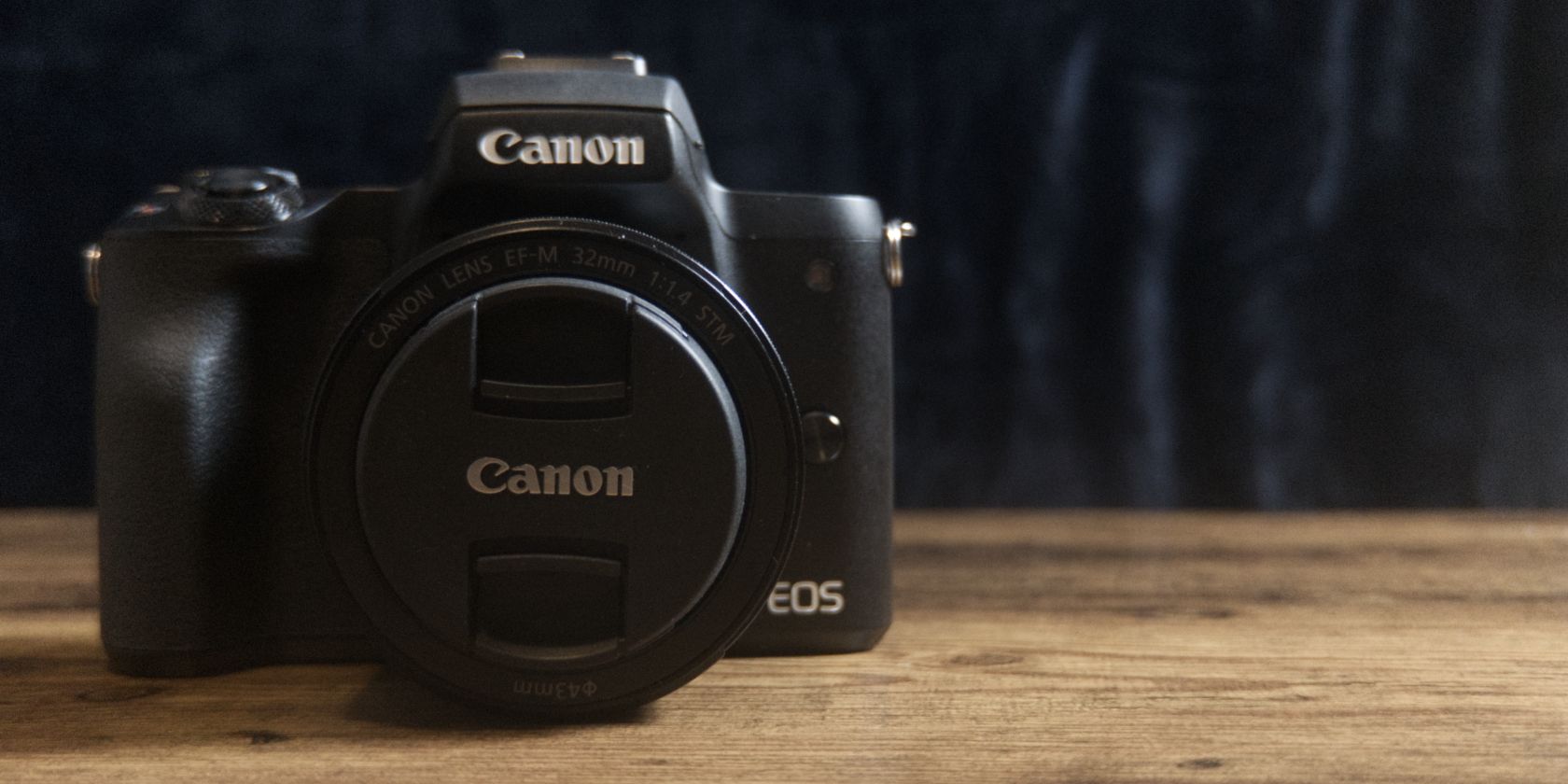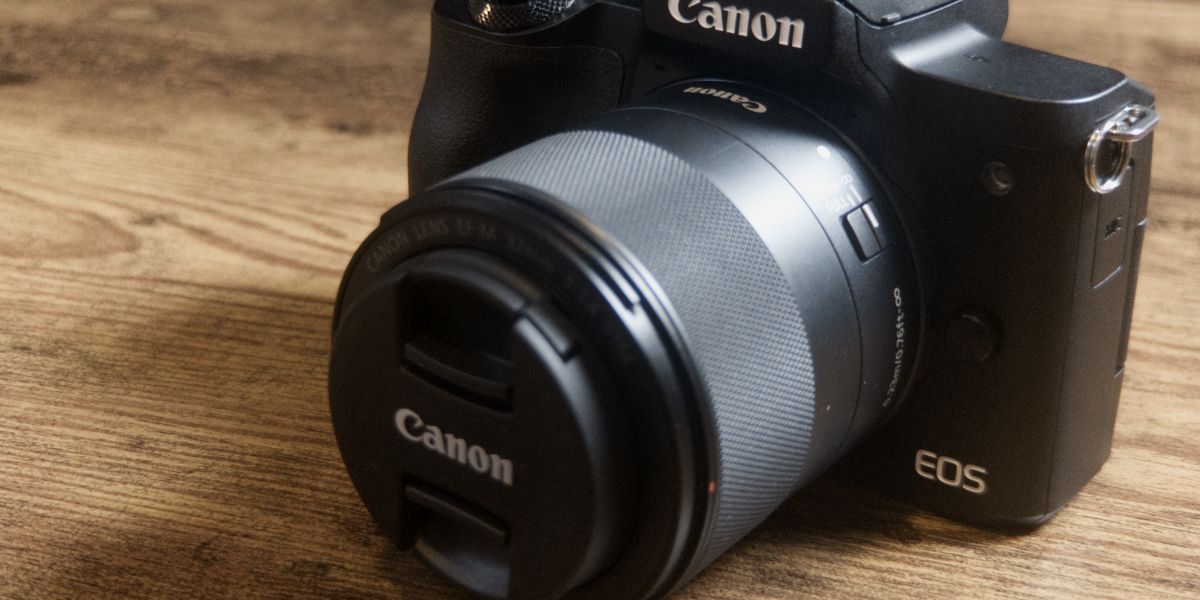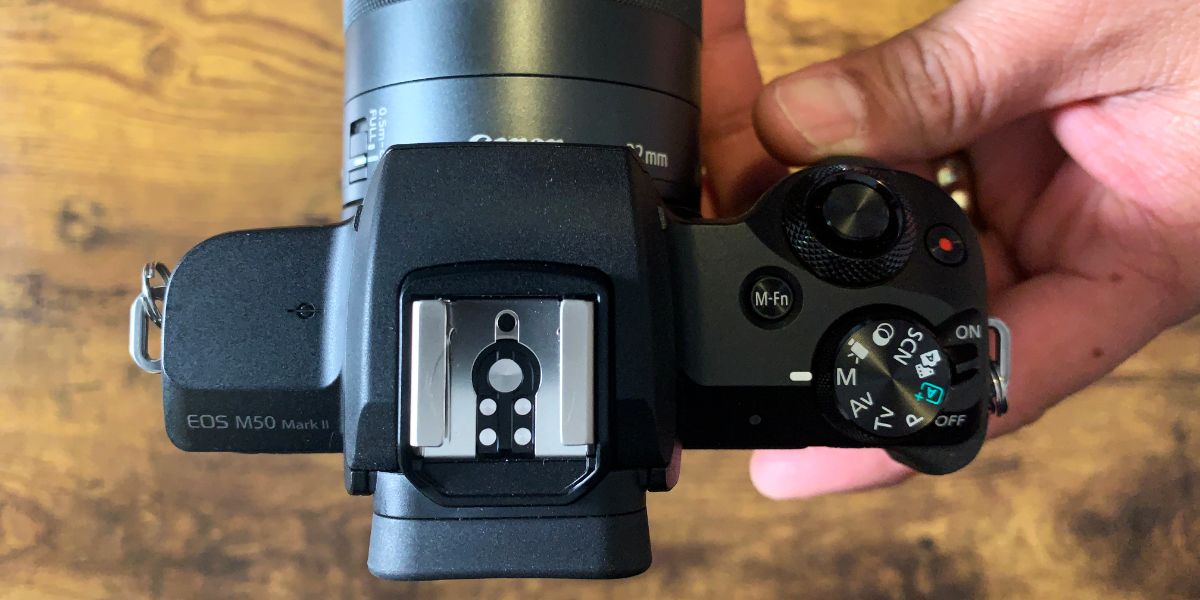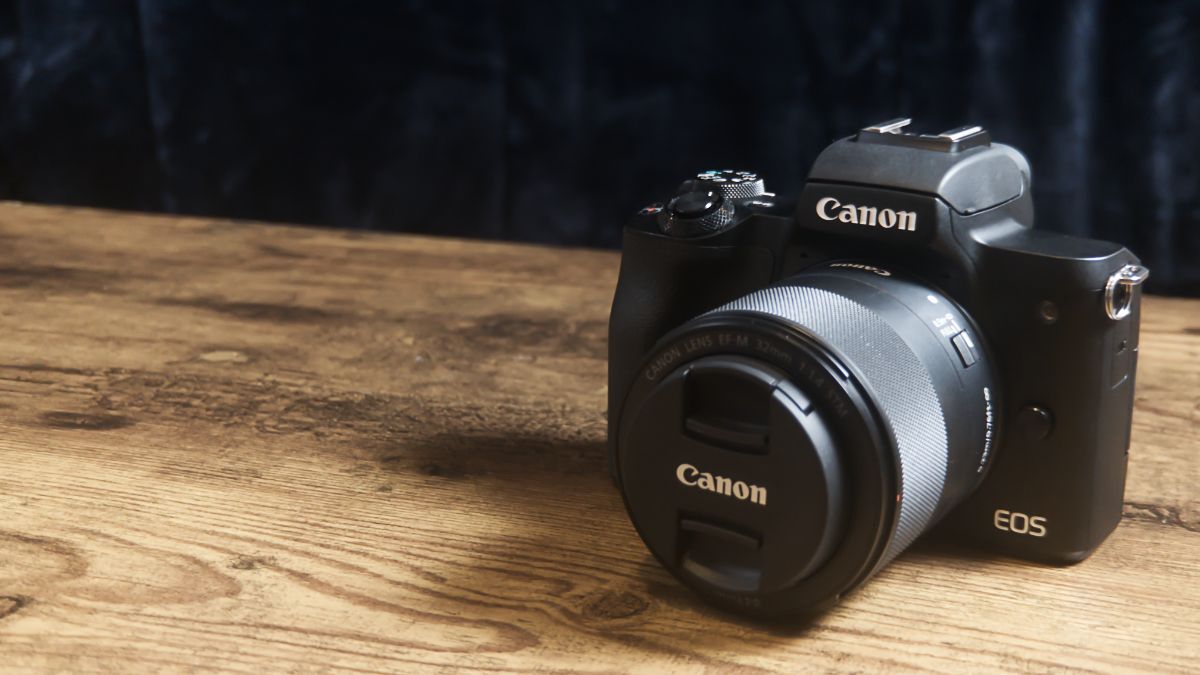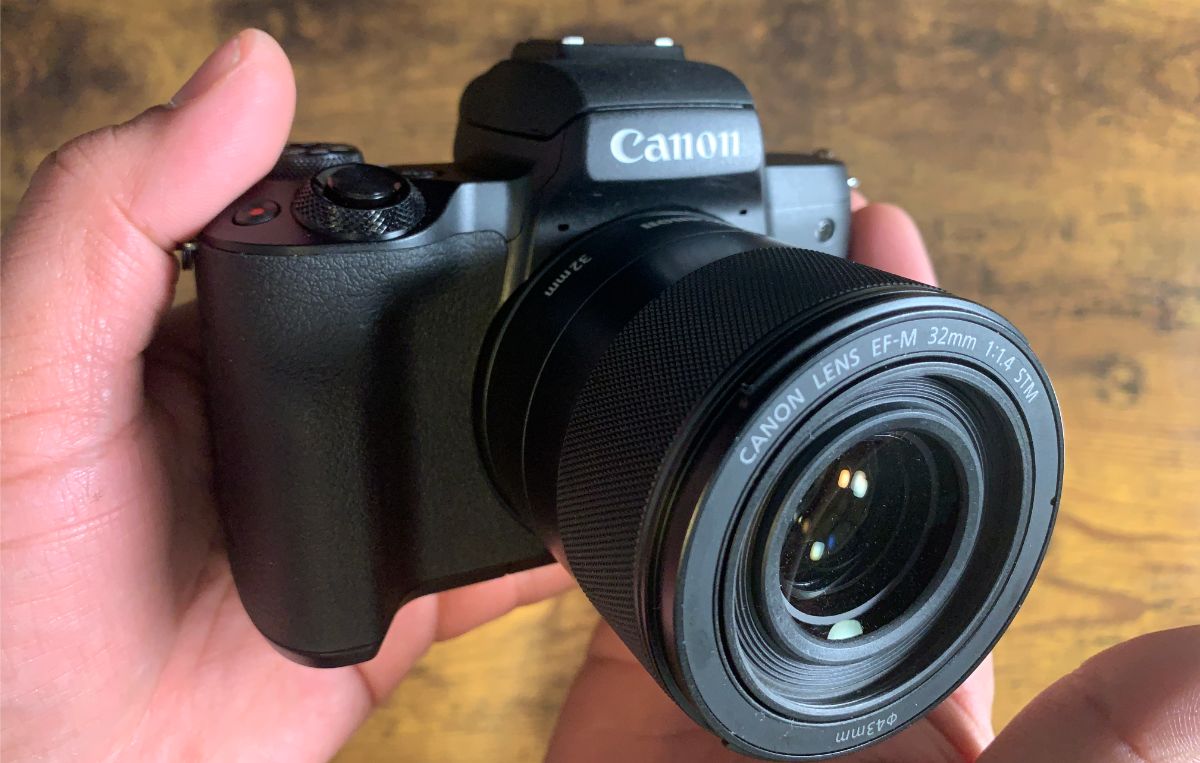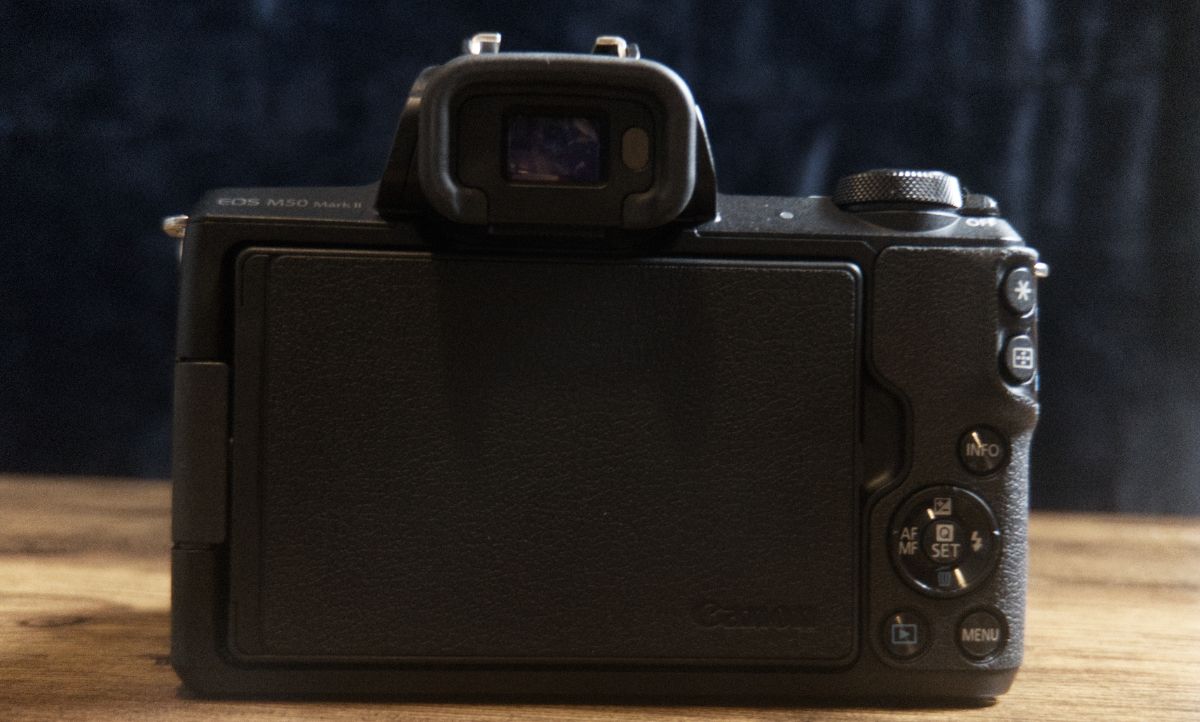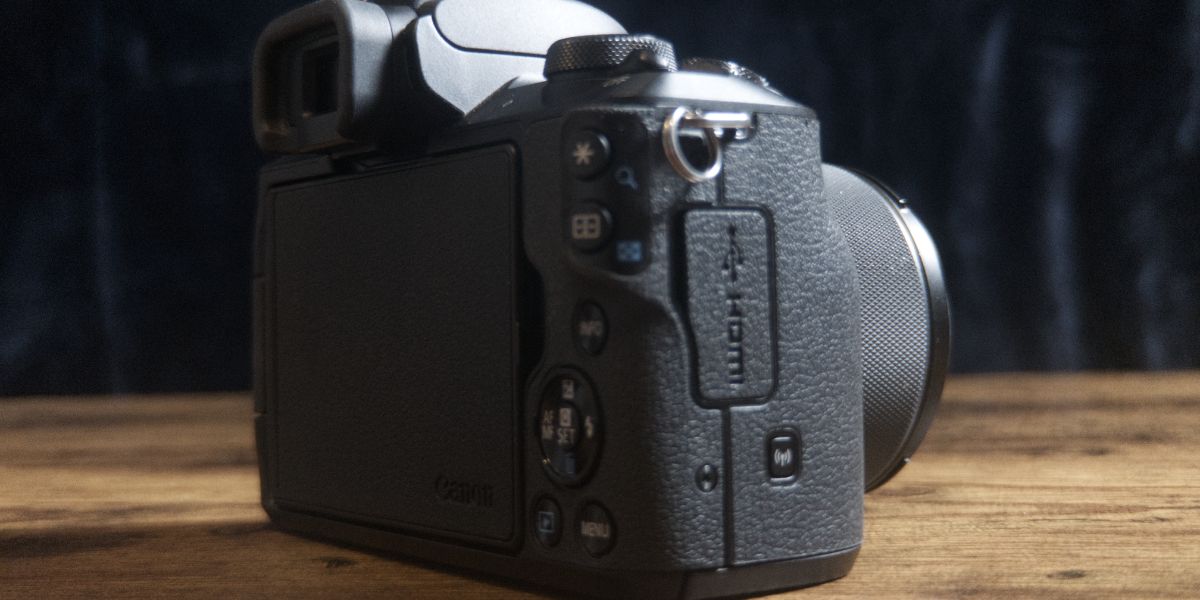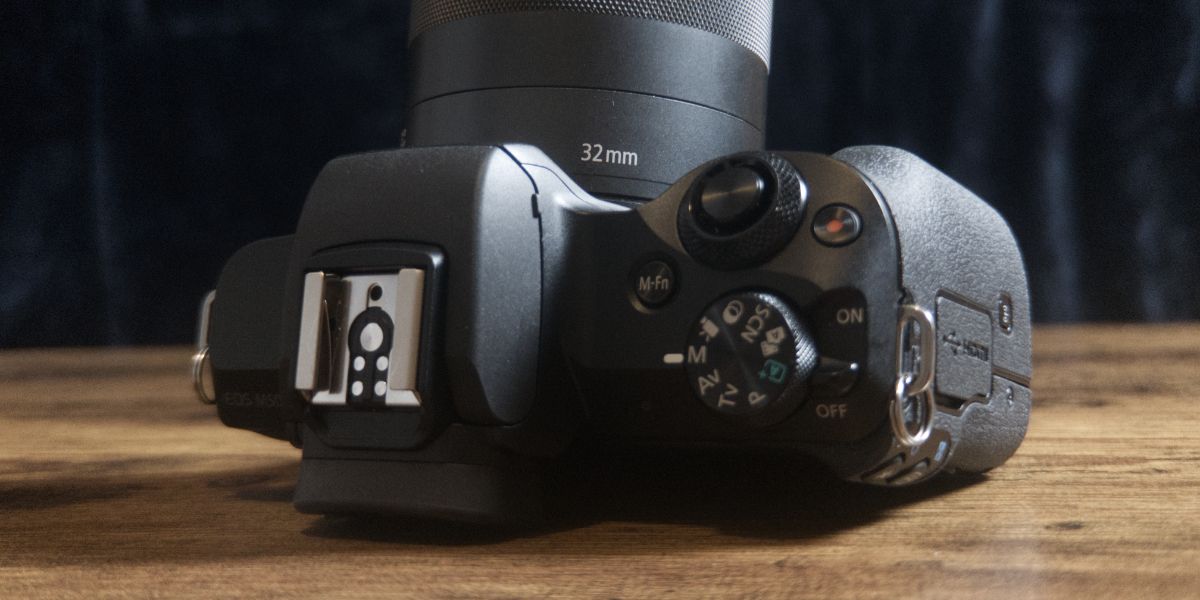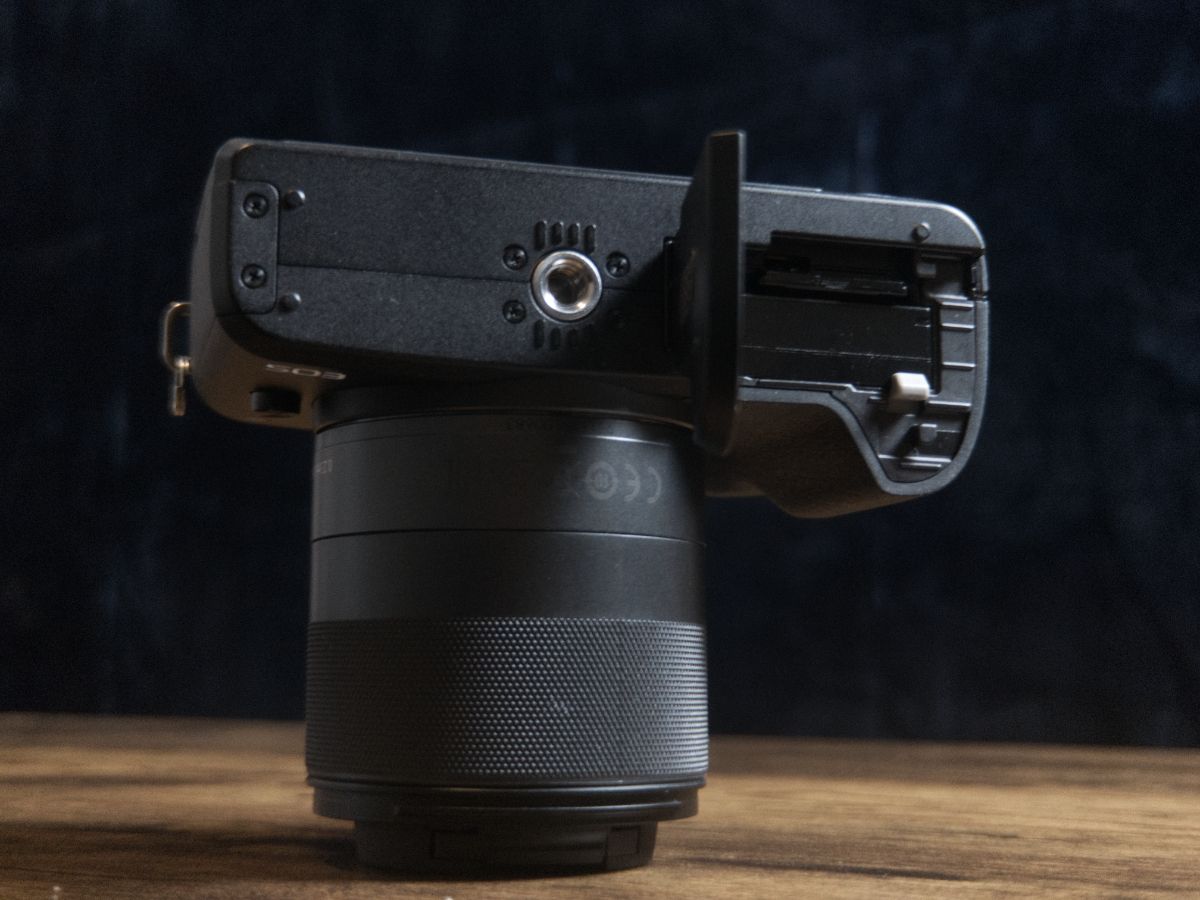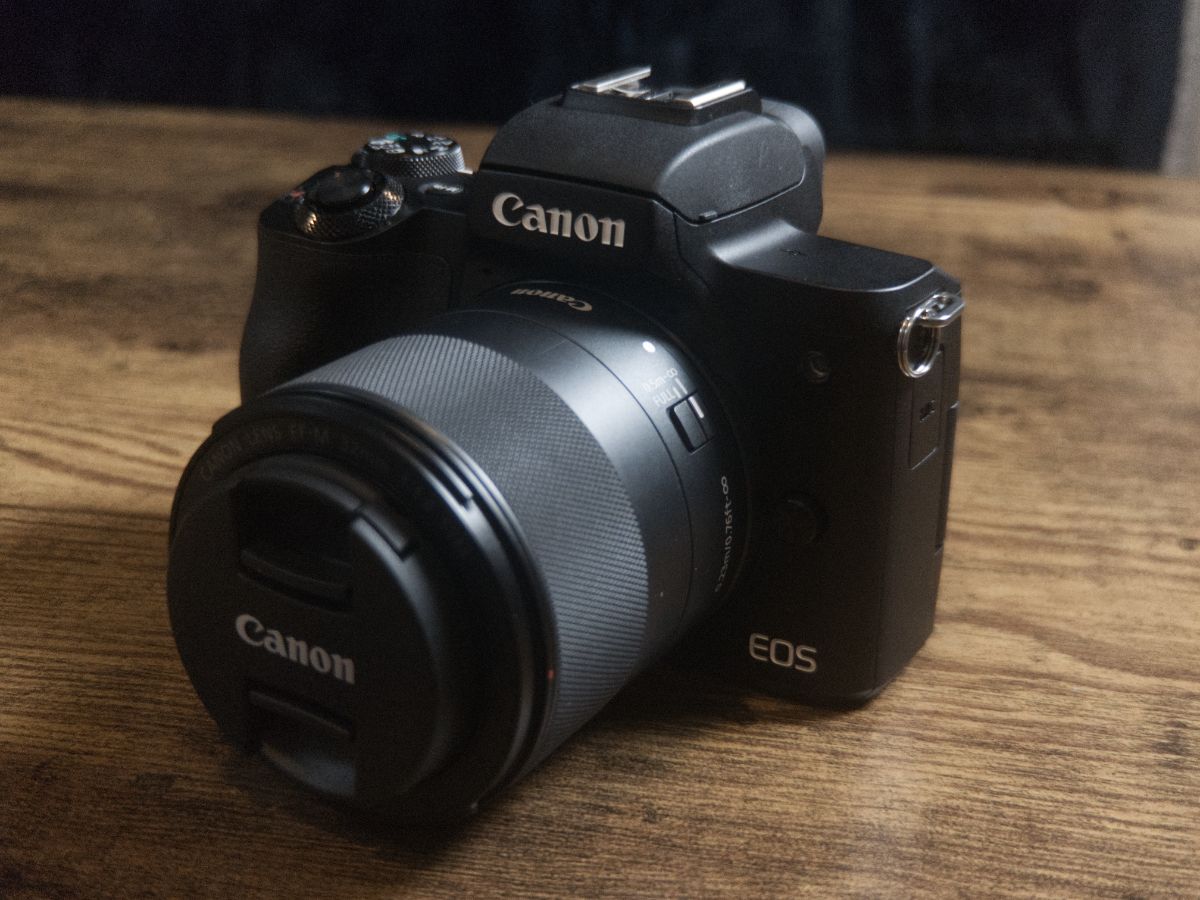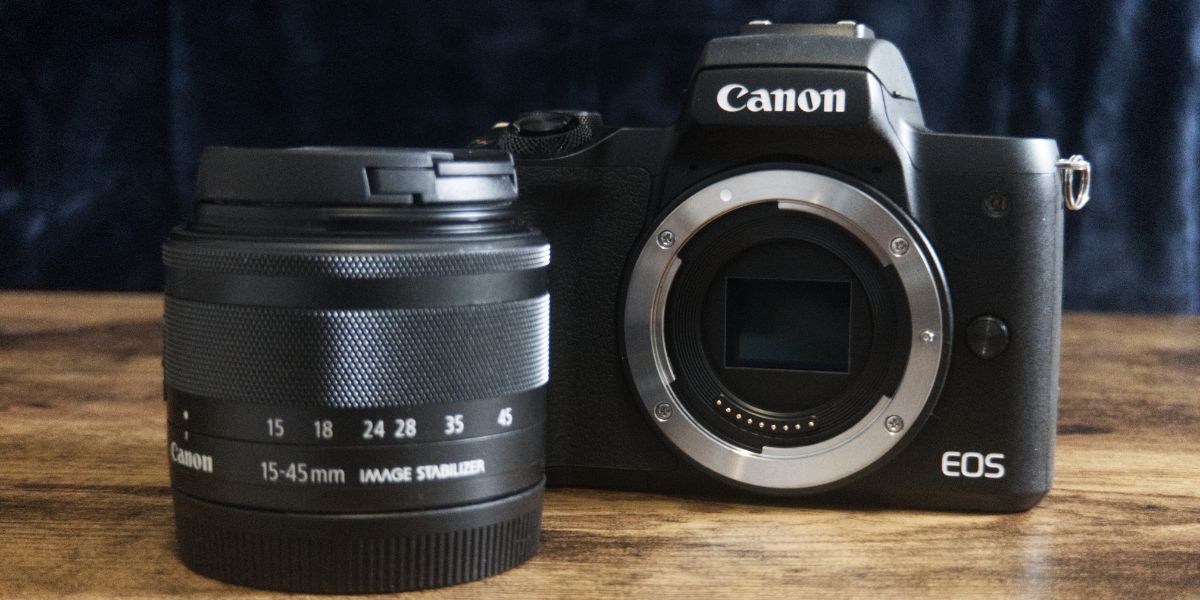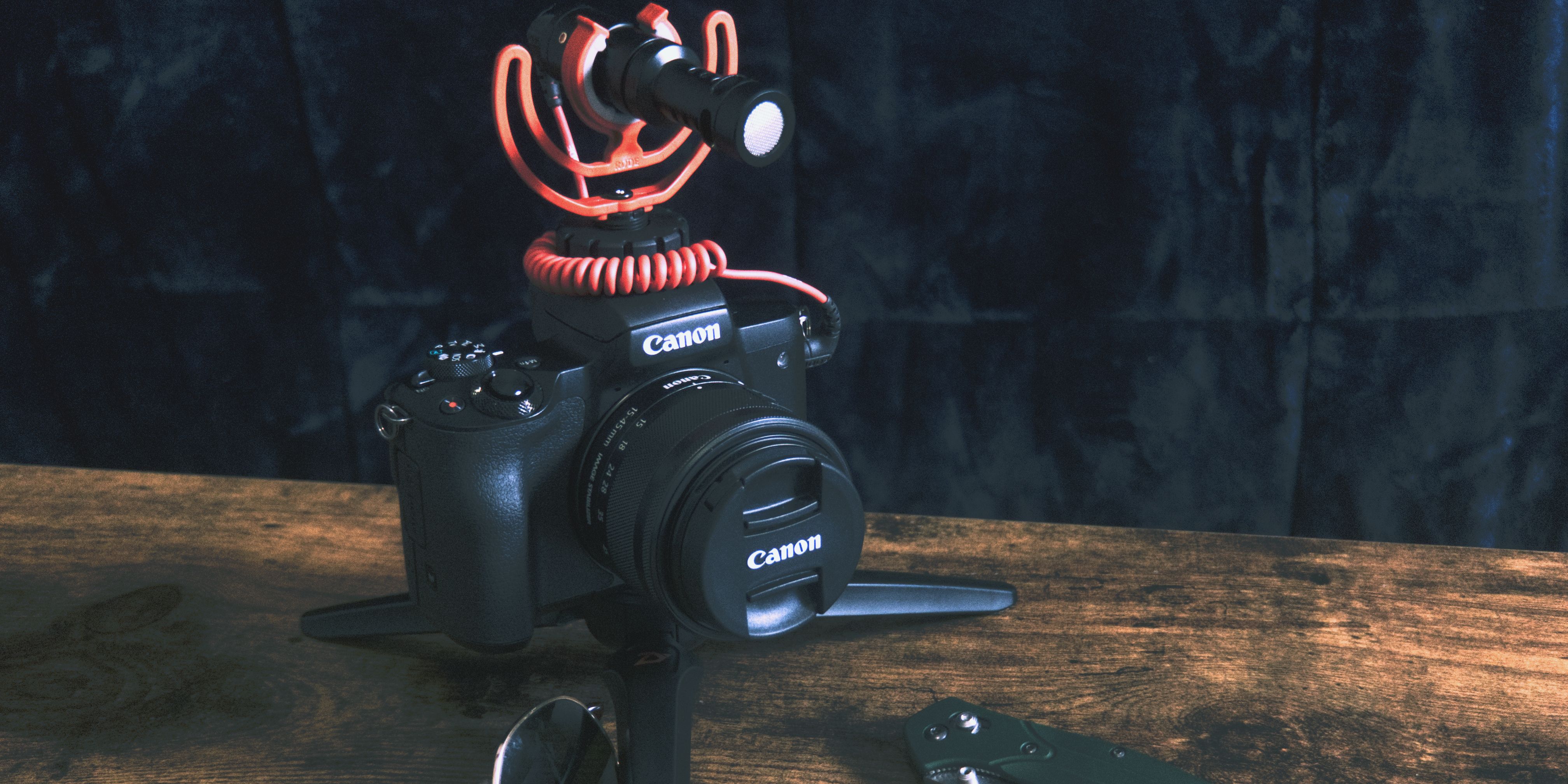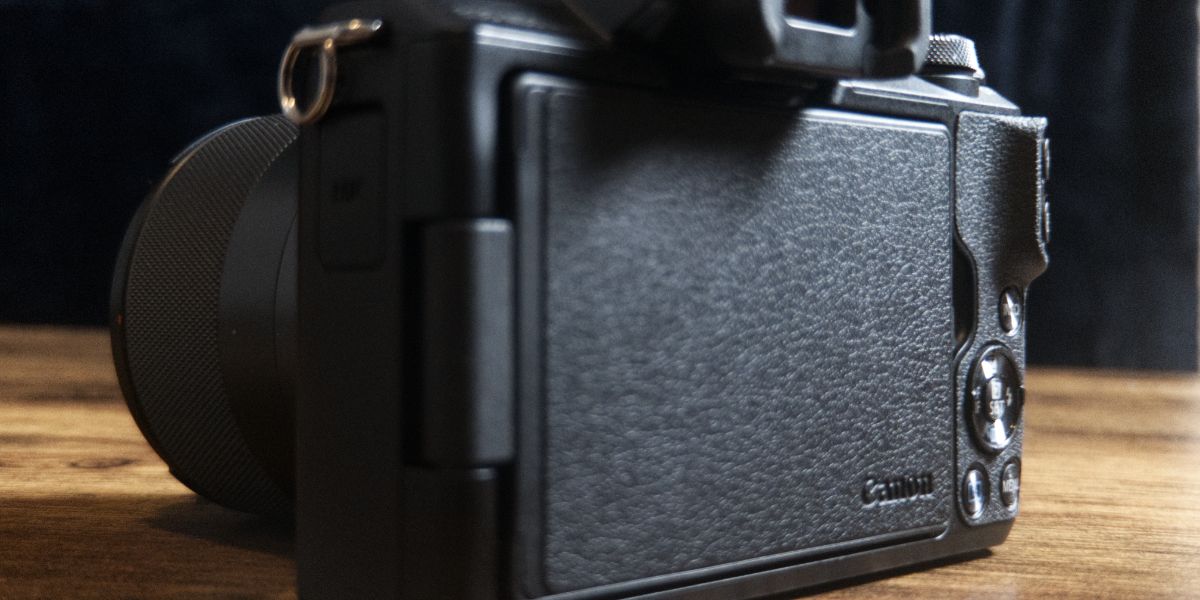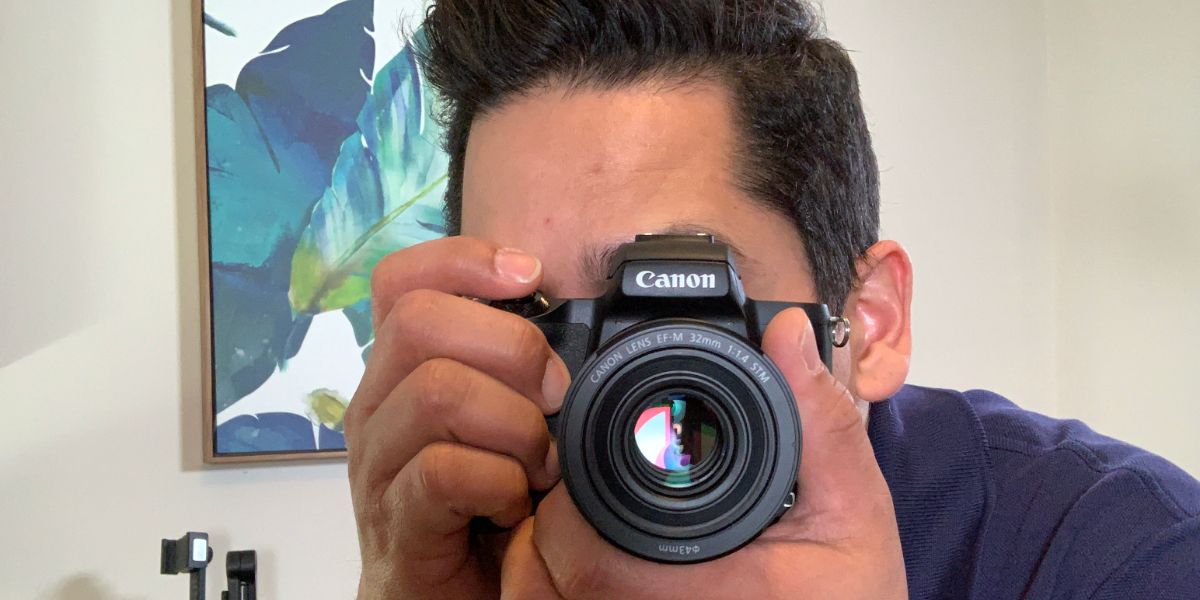Canon M50 Mk II
If you're looking for a starter camera that makes your photos and videos pop, you can’t go wrong with the EOS M50 Mk II.
- Lightweight
- YouTube Streaming
- Vertical Shooting Mode
- 4K video (Cropped)
- Flip-Out Display
- Mirrorless
- Hot Shoe Mount
- Brand: Canon
- Sensor Size: CMOS APS-C 22.3mm x 14.9mm
- Video Resolution: 3840 x 2160
- Photo Resolution: 6000 x 4000
- Battery: Yes
- Connection: USB, HDMI, Audio In
- Size: 4.6 x 3.5 x 2.3 inches (Body only)
- Weight: 387 g
- Water Resistance: No
- Lens: 15 - 45 mm kit lens ; EF-M mount
- Easy to Use
- Onboard Mic Input
- Clean HDMI Out
- Vlogging Beast
- Wide Range of Accessories
- Photos and Videos are Stunning
- Durablity
- Battery Life
- Only Slight Upgrade from Original
- Kit Lens is Just Okay
- Canon App is Terrible
F-Stops. ISO. Shutter Speed. Autofocus. The Exposure Triangle. Focal Length. 35mm vs. 50mm. Full-Frame vs. Micro Four Thirds. Mirrorless vs. DSLR. As a beginner, this is a short list of terms that you’ll be expected to know to get the best out of a consumer-grade camera.
While there is no substitute for good-old-fashioned-experimentation when it comes to shooting photos, sometimes you want to grab your camera and take a decent picture. But maybe you want to live out your Casey Neistat dreams of being the next Youtube Vlog sensation. Heck, maybe you'd like to use a camera that doesn’t come with a monthly service plan or double as a handheld Bejeweled Blitz machine.
If only there were an entry-level camera that could help you solve those problems without costing a small fortune. If only a camera could take great photos without generating snotty looks from mustachioed hipsters effortlessly wielding their $8,000 Leicas. Well, folks, allow me to introduce you to the Canon EOS M50 Mk II.
The EOS M50 Mk II is the new 24.1-megapixel, mirrorless camera that improves upon the M50 Mk I from 2018. It uses the DIGIC 8 processor, designed to improve image quality even at higher ISO speeds. The EOS M50 Mk II can shoot 4K—more on that in a moment—at 24 frames per second (FPS); and shoot 1080P up to 60 FPS. The maximum video image size is 3840 x 2160.
Canon considers this its "entry-level" offering, and I am inclined to agree. But, with the entry-level price point and consumer in mind, that means the camera offers several features that make it easy for the average person to use. I think that's one of the EOS M50 Mk II's biggest strengths.
What’s in the Box?
- The Canon EOS M50 Mk II Body
- 15-45mm Zoom lens
- Owner’s Manual
- Battery
- Charger
- Lens caps
The Canon M50 Mk II is the second iteration of the previous Canon M50 mirrorless camera staple in the YouTube vlogging world. A search on YouTube yields an almost endless supply of M50 videos. Seriously, everyone has this camera.
The wide use means there's also an abundance of accessories available for the M50 Mark II, including lenses, cages, speed-boosters, USB power adapters, 110v A/C plug-in power supplies, and much more.
So, what makes the EOS M50 Mk II better than the original? And why should you fork over an additional $50 bucks on top of the price of the original M50 for the standard Mk II body-and-kit-lens package? And what about all that negative press?! Isn’t the M50 Mk II just a software update to the original M50?
Yes. Essentially the hardware for the M50 Mk II is the same as the original M50. And Yes, the Mk II is essentially just a software update from the original. Don’t listen to the haters, though. You should still buy the Mk II unless you're only planning on taking photos.
But why? Well, mostly because I think it adds $50 worth of additional features that you’re not going to get if you decide to buy the original.
Features like autofocus improvements, and a clean HDMI out, which means that you can plug the M50 MK II into a desktop monitor to gaze into your own pretty face while filming for your adoring YouTube fanbase, or record to an external device.
There’s also better battery life. That means about 1/3 more photos than the original M50, not to mention more video footage. And the Mk II offers improvements to autofocus, as well as a new feature—eye-tracking focus. Plus, you can use autofocus while the AI Servo AF is active—a feature that makes motion capture simple and is absent from the original M50.
Is the EOS M50 Mk II an Upgrade?
If you’re going to make a decently large purchase for a camera that is around $700, then you want the absolute maximum of features packed into whatever you buy. While the original M50 is still a great camera, it’s not the best for vlogging, and the camera’s anemic battery life has been flagged more than once. Of course, you could always spend a little extra and buy another battery if you like. That’s a great way to go as well. Or you could buy the Mk II.
Then there's the autofocus. Canon is famous for its dual pixel autofocus. I won’t get into the jargon-y specifics because I don’t like to bore my readers, but what you need to know is this: Canon's dual pixel autofocus is awesome.
It’s great for videos and normal photography alike. It’s also fast. Eye-controlled focus (eye-tracking) adds to the dual pixel autofocus by accentuating the subject’s eyes while shooting.
It’s generally accepted that if you want to take good portraits, then you should focus—no pun—on the eyes of your subject. The eye-tracking focus feature makes it easy to do just that.
In addition to the improvements in autofocus, Canon added a vertical video shooting mode designed for your favorite photo and video-based social media platforms. The company has added wireless YouTube streaming (though YouTube restrictions mean you'll need over 1,000 subscribers), and you get that clean HDMI out so that if you’re streaming via the HDMI port, you don’t have to stare at the on-camera settings.
This on-camera info display was a huge gripe for a lot of folks with the original EOS M50. With that model, whenever you connected an external display, there was no way to turn off the busy informational display settings. The Mk II changes that.
While we’re on the subject of minor gripes with the M50 Mark I, let’s talk about a feature that the Mark II has that the Mark I didn't. The flip-out screen record button.
That means you can now reach over and tap the on-screen button to start your video while you can still see yourself in the frame. The new on-screen record button is a little thing, but it’s something that the vlogging crowd and I certainly appreciate.
The M50 Mark II also makes it quick to get up and running. Charge the battery, pop on the lens, insert a memory card and get shooting. Additionally, for all of you colorists, the Mk II can shoot in a mostly flat color profile with a little software tweaking. But, I should note that it won't shoot LOG.
Did I mention that the M50 Mk II can be used with Zoom and OBS or the Canon EOS Webcam Utility as a webcam? It can, and it is also fabulous for this purpose as long as you have enough battery life to support it.
Personally, I bought an adapter that allows me to plug the camera into an AC cable and plug that cable into the wall. I love it. Every time I use the M50 Mk II as a webcam, I get bombarded with questions about my setup.
For the best use of this feature, I'd recommend you look into the 22mm f2.0 lens that Canon offers for the EF-M mount cameras. This lens gives you a wider shot and a larger aperture than the 15-45mm kit lens that the M50 ships with.
Related: Simple Ways to Improve the Quality of Your Photos
Ease of Use
Arguably the biggest benefit of the Mark II is how easy it is to pick up and use. Unfortunately, the kit lens isn’t the sharpest, and the f/3.5 aperture doesn’t lend itself to the type of creamy bokeh that you’re used to seeing in professional portrait photography. Still, for amateur photographers looking to get their feet wet, this is a great package.
For point-and-shoot photography, the 15-45mm kit lens is more than enough to make your photos pop. Though, you should know that low-light settings are going to require increased ISO. Past 400 things start to get a little grainy, but most photos don’t really suffer until you’re around the 800+ mark.
The one thing the 15-45mm kit lens is excellent at is vlog content creation. Paired with a small on-camera shotgun mic and a gimbal or GorillaPod, this setup is a vlogging beast. It’s no wonder so many YouTubers—some with several hundred thousand followers—use their EOS M50 as their primary run-and-gun rig.
While the Canon’s mic preamp is slightly lacking, using this setup with both the Rode VideoMicro and the Takstar Sgc-598 provided plenty of decent quality audio capture. A little normalization and compression in post were all it took to get decent quality sound.
Is the M50 Mk II Durable?
It is, and I want to take a moment to focus on its durability. Now I admit, I am not the most careful person when it comes to my equipment. That’s why, when I managed to knock over my tripod not once but twice, with the M50 Mk II on top of it, I almost wound up on blood pressure meds.
Both times I thought I was going to scoop up a camera with some extreme damage. Maybe a broken viewfinder or a smashed touch screen.
Well, I am happy to report that my Canon M50 Mk II doesn’t have a scratch on it. The lenses aren’t cracked or damaged, and the display is clear and sharp. The body of the camera looks like it was just taken out of the box.
There are really only two possibilities for why this is: either I’m lucky (and I certainly need to be more careful with my equipment) or, maybe the M50 Mk II is a pretty durable unit for even the most buttery of fingers.
What's Not to Love About the M50 Mk II?
After a few weeks using the M50 MK II, I can honestly say I have only a couple of complaints. First is the cropped image in 4K. While this camera is touted as a 4K camera and perfectly capable of recording in 4K, the sensor will dump a large portion of its field of view. This is an additional 1.6x crop over the APS-C crop of 1.6x (2.56x total). Also, while in the 4K mode, you lose Canon’s delicious dual pixel autofocus.
This isn’t really a problem for me, as I don’t like shooting in 4K anyway. Even when I am creating content, I prefer to shoot at 24 FPS in 1080p full HD. Footage shot at 24 FPS has that cinematic look that I adore, and I can use the autofocus to make sure all of my shots are effortlessly tack sharp.
Second, on this list is the Canon iOS app. I hate it. It’s buggy, it’s clunky, it crashes often, and it constantly makes me reset the Wi-Fi settings of the camera to use my phone as a wireless display. The app drives me absolutely insane, and if any Canon app developers are reading—shame on you.
Last on the list is the digital viewfinder. While it works well as a viewfinder, the sensor next to the viewfinder might give me an aneurysm. Whenever I am using the camera for Zoom meetings, I find the sensor will shut off the external display if it is near a reflective surface—namely, the watercolor painting hanging above my desk. Fortunately, this sensor can be disabled in the menu for the M50 Mk II.
Should You Buy the Canon EOS M50 Mk II?
I think you know the answer to this question by now. If you don’t, then get your credit card out; it’s time to do some camera buying. The original M50 was a great all-around camera. The Mark II adds several improvements aimed at content creators and vloggers. If you fit that description, and you can’t afford to spend $3,000 to improve your smartphone shots, then the M50 MK II is a great choice.
If you are looking to start a YouTube channel, then the M50 Mk II has enough features to keep you busy for a while. You might eventually outgrow it, though some YouTubers continue with the M50 well into the six-figure subscriber counts.
If you need a camera that will allow you to level up your photographs, this is the camera to buy. And while you’re at it, think about upgrading from the kit lens to the Canon 32mm F1.4. It’s how I get most of my product photography shots. Finally, if you need a small and lightweight camera for taking on the road or for street photography, the M50 Mark II isn’t cumbersome and doesn’t draw a lot of attention.
On the other hand, if you’re a die-hard camera enthusiast who breathes shutter speeds, or if you can spot the difference between a nifty 50 and a 35mm at 300 yards, then you’re better off buying something a little more high-end. Additionally, if the thought of auto-anything makes you shudder (pun intended), then save up for a while and buy a Sony A7s III. You’ll be much happier.
Final Focus on the EOS M50 Mark II
Overall, the M50 Mk II is a delightful starter camera. Canon makes it easy for a total beginner to pick up the unit and get some great photos off the rip. That’s really what makes it excellent. It has a diverse range of functions for both budding photogs and experienced users alike. Unfortunately, it won’t compete with some of the more expensive models, but for regular people who want a camera that makes their photos look great without much effort, you can’t go wrong with the EOS M50 Mk II.
Ignore the crowd that says this camera is “disappointing.” It’s not. It just has a specific purpose, and what it is designed to do—namely, be an entry-level vlogging camera with excellent photo capability—it does well.
Though the M50 Mark II might not make you a YouTube star, it will help you get started.

